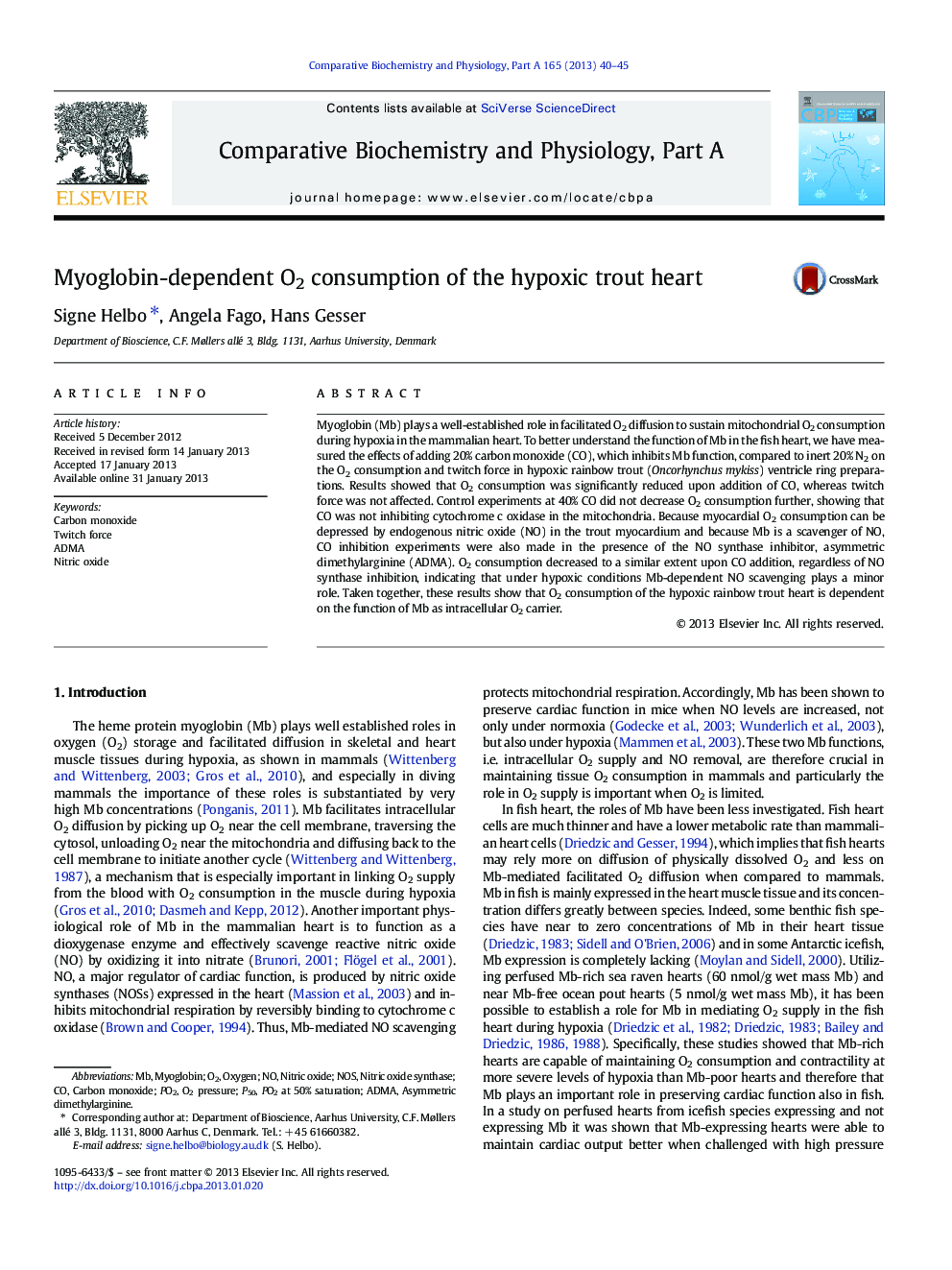| Article ID | Journal | Published Year | Pages | File Type |
|---|---|---|---|---|
| 1972374 | Comparative Biochemistry and Physiology Part A: Molecular & Integrative Physiology | 2013 | 6 Pages |
Myoglobin (Mb) plays a well-established role in facilitated O2 diffusion to sustain mitochondrial O2 consumption during hypoxia in the mammalian heart. To better understand the function of Mb in the fish heart, we have measured the effects of adding 20% carbon monoxide (CO), which inhibits Mb function, compared to inert 20% N2 on the O2 consumption and twitch force in hypoxic rainbow trout (Oncorhynchus mykiss) ventricle ring preparations. Results showed that O2 consumption was significantly reduced upon addition of CO, whereas twitch force was not affected. Control experiments at 40% CO did not decrease O2 consumption further, showing that CO was not inhibiting cytochrome c oxidase in the mitochondria. Because myocardial O2 consumption can be depressed by endogenous nitric oxide (NO) in the trout myocardium and because Mb is a scavenger of NO, CO inhibition experiments were also made in the presence of the NO synthase inhibitor, asymmetric dimethylarginine (ADMA). O2 consumption decreased to a similar extent upon CO addition, regardless of NO synthase inhibition, indicating that under hypoxic conditions Mb-dependent NO scavenging plays a minor role. Taken together, these results show that O2 consumption of the hypoxic rainbow trout heart is dependent on the function of Mb as intracellular O2 carrier.
